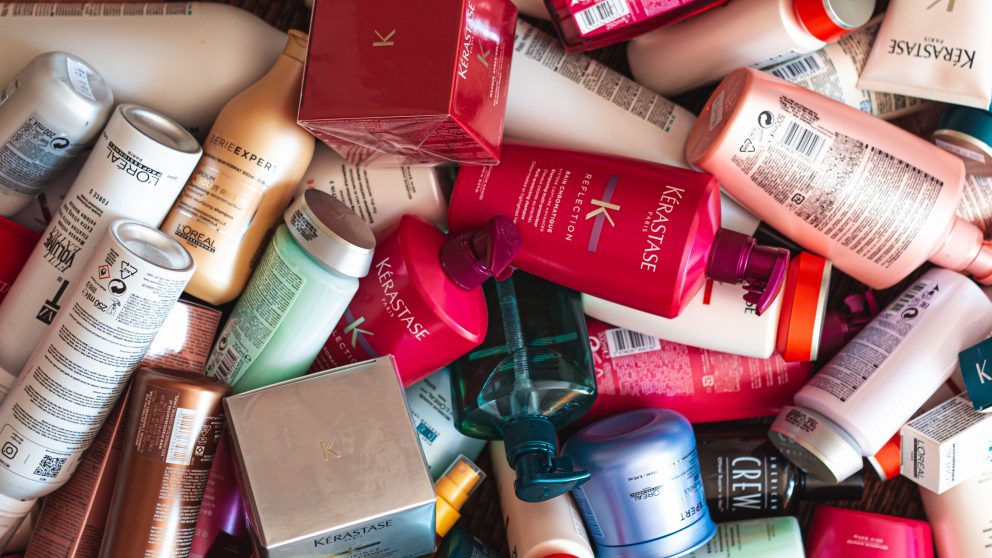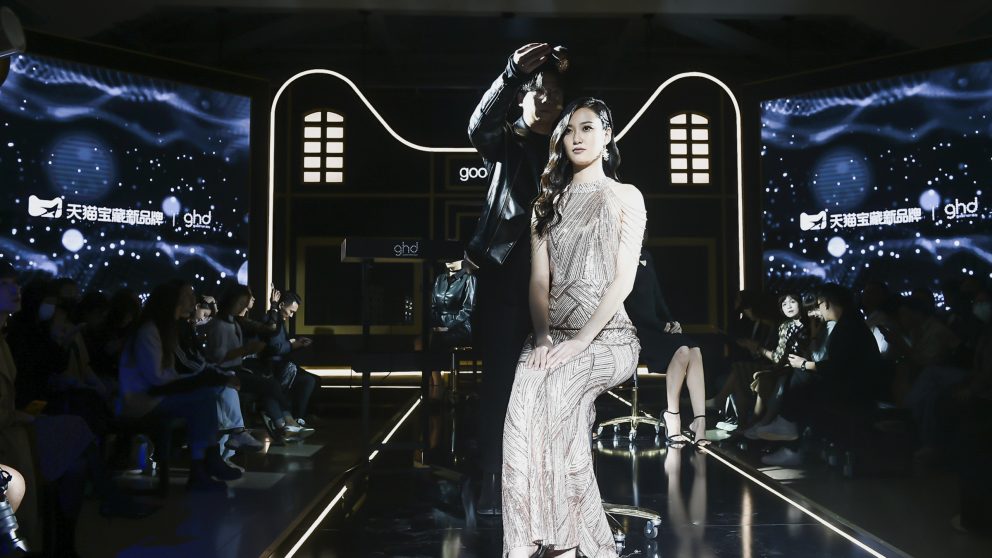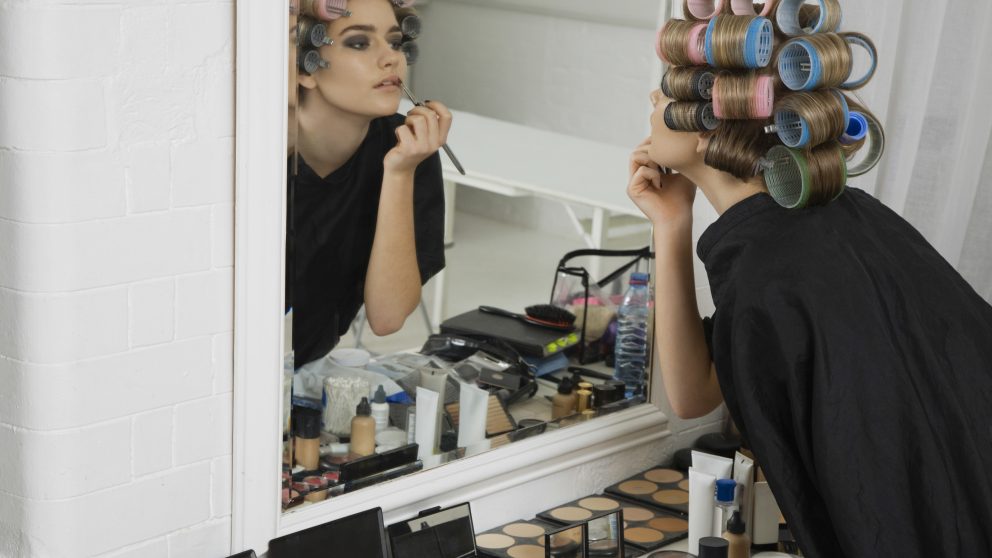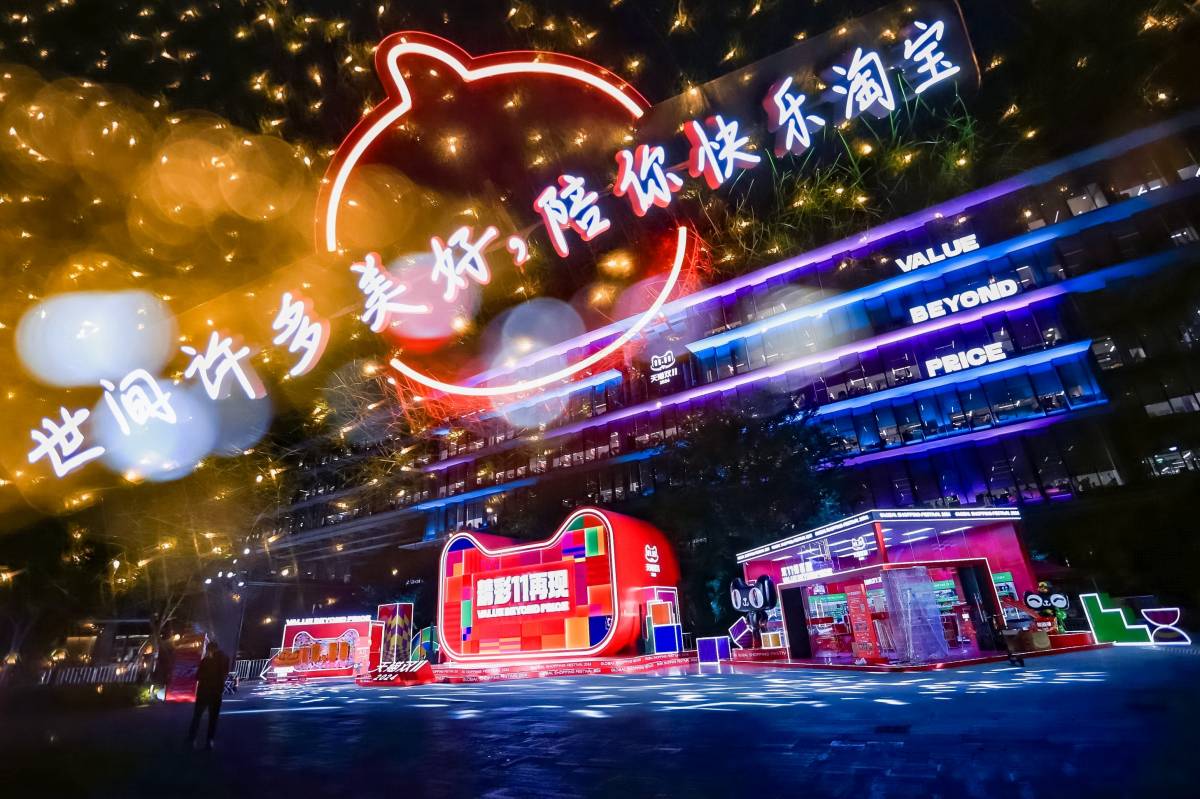
Sales of premium haircare brands have soared in China. Photo credit: Shutterstock
As the coronavirus pandemic shuttered hair salons, women embraced greying locks and let their bangs grow out, sending shockwaves through the haircare industry.
A few nimble merchants rode a surge in e-commerce and China’s swift rebound from the pandemic, helping them outperform the industry.
France’s Kérastase and California-based Olaplex, to name a couple, quickly expanded digital operations in the world’s second-largest economy and have seen sales boom.
“China, for the better part of the last year, recovered significantly faster than the rest of the world. People can travel, eat out and are literally getting on with their social lives,” said David Leong at British hairstyling brand ghd, which launched in China seven months ago.
Millennial and Gen Z consumers have emerged as trendsetting demographics and have shown a marked preference for shopping online and discovering niche brands. That’s an easier pastime in China where digital channels represent roughly 60% of haircare sales, according to estimates from market research provider Euromonitor International.
“With e-commerce making up an increasingly large part of the total market in China, a lot of niche cross-border e-commerce brands are also proactively entering the market,” said Kemo Zhou, a senior analyst Euromonitor.
These digitally native brands are quickly capitalizing on emerging retail categories such as ecologically friendly products, male beauty and scalp care. These trends are creating a vibrant, fast-evolving landscape, making China the second-largest market globally for the haircare industry after the United States.

Good Hair Day
E-commerce allows luxury start-up brands that don’t have people in China to quickly and relatively cheaply reach digitally savvy Chinese consumers. E-commerce platforms, such as Hangzhou-headquartered Alibaba Group, furnish them with insights and data analytics to navigate the complex market and respond rapidly to changes in consumer behavior.
During the first three days of the world’s largest shopping festival, 11.11, the gross merchandise value generated by hair-growth products ballooned 127.6% among Millennial and Gen Z shoppers year on year, per data from Alibaba’s online marketplaces.
“I’ve been given early reportings that we are already multiples over the same time last year, and last year we were already in a very good place,” JuE Wong, Olaplex’s CEO told Alizila.
The number of overseas haircare brands launching on Alibaba’s Tmall Global, a cross-border online marketplace for foreign brands and merchants to sell directly to Chinese consumers, has doubled in the first ten months of this year versus last year. Parisian brand Christophe Robin was one of the earliest scalp-health companies to launch on Tmall in 2018, Kérastase and U.S. firm Ouai joined last year.
Olaplex highlighted in its recent US$1.55 billion initial public offering that its partnership with Tmall Global was a key area of focus in the future.
“China is a long game for us. Its not a one-hit wonder, and we are super excited to really bring customers along with us and have them spread the word,” said Olaplex’s Wong.
To be sure, the largest multinational companies are also expanding marketing teams in China as more consumers tune into content streams as a form of entertainment. They have embraced digital tools such as livestreaming e-commerce, as well as hired key opinion leaders, dubbed KOLs or influencers, such as Austin Li, China’s Lipstick King, and digital super-saleswoman, Viya.
Cincinnati, Ohio-headquartered Procter & Gamble leads China’s haircare market with a 34% share, says Euromonitor. However, niche, premium brands took market share from mass-market retailers last year.
Silver Linings
The pandemic sideswiped global beauty and haircare industries in ways the industry had never seen before. Makeup sales dwindled as masks became ubiquitous and sales of hair stylers slumped as fancy social occasions dwindled; even the sale of shampoos off supermarket shelves slowed as people washed their hair less.
China was one of the few markets to normalize quickly, expanding 3% last year to RMB58.8 billion (US$9 billion) and is likely to grow at a 4.9% compound annual rate (CAGR) until 2025, per Euromonitor, that’s faster than the U.S. market at a 3.4% CAGR.
As the pandemic gradually morphs into an endemic, the beauty industry is adapting to the new normal and several haircare trends have taken root.
Consumers learned during lockdowns to color silver hair by themselves and sales of at-home hair dye kits swelled as middle-aged and elderly people stocked up. Well-known colorants players such as L’Oréal and Henkel met the burgeoning demand for at-home colorants, said Euromonitor analysts.
Therapy and premium brands also saw sales skyrocket as people became more conscious of their health and had more time to research treatments. Digital channels spurred sales of professional salon treatments and other premium products over off-the-shelf supermarket offerings, said haircare consultants and China market experts.
The internet has been a great democratizer of information
As more merchants pivot online, consumers can research a wider array of products, read customer reviews and explore the science behind formulas.
Daniel Hodgdon, CEO of digitally native haircare brand Vegamour, said the online shopping experience beats walking into a store and relying on the opinion of one salesperson who is paid to sell products.
“The internet has been a great democratizer of information and it’s so easy for people to do research,” said Hodgdon on a Zoom interview with Alizila from the company’s headquarters in Los Angeles.
The pandemic has also stoked greater demand for clean beauty brands by amplifying consumers’ preference for products formulated with natural ingredients such as plants.
“People are finally starting to pay attention. Covid made them wake up and say our health is important,” said Hodgdon, adding that Vegamour’s sales have risen throughout the pandemic.
Vegamour’s Hodgdon, who grew up in Asia believes that Chinese consumers will enthusiastically embrace the company’s vegan wellness products because of their deep-rooted appreciation for a holistic approach to health, including herbal medicine and acupuncture.
Investors have clamored to back the group’s China growth plans and Vegamour eventually picked General Atlantic from amongst its financial suitors. Vegamour is soft-launching in the world’s second-largest economy during the 11.11 Global Shopping Festival.

Haircare Rituals
Inspired by the flourishing skincare retail category, brands are trying to revitalize the mature haircare segment globally by introducing skincare rituals to haircare, such as masks and oils, a trend that experts call “skinification”.
Beauty brands are also producing higher-grade shampoos and conditioners, as well as specially designed at-home hair regimens. More research dollars have poured into heightening the sensory experience of haircare, amping up aromas and creamy textures.
“We see salon-professional haircare brands exampled by Kérastase being extremely well-received among consumers these years with rocketing growth,” said Euromonitor’s Zhou.
In China, Tmall Global has created a category especially for scalp care to meet an upsurge in orders this year. Scalp care-related search terms in the marketplace spiked 12 times this year versus last. Sales of imported scalp care products jumped by 340% year-on-year and haircare essential oil ampoule sales increased by 170%.
“Skinification is really about understanding what works and what is necessary to upkeep hair and it starts from your scalp. We do see a lot of scalp care products entering the market,” said ghd’s Leong, who is based in Shanghai and has worked in the beauty industry for over 15 years, including stints at L’Oréal and Henkel’s Schwarzkopf.
It’s not just women who are pampering their tresses and rubbing oils in their scalp, male consumers are also researching healthier and more effective options.
“Male consumers who are interested in their skin, in their hair, in overall wellness, see this as a healthy approach; it’s not about vanity,” said Olaplex’s Wong.
Brands that don’t respond swiftly to dramatic shifts in the haircare market risk losing to more nimble competitors.
After Victoria’s Secret Fashion Show model Georgia Fowler touted New Zealand-based vegan and cruelty-free Monday Haircare to her followers, it outsold Procter & Gamble’s shampoo brand Pantene within three months of launch. Pantene has been a regular feature on supermarket shelves since 1945.





